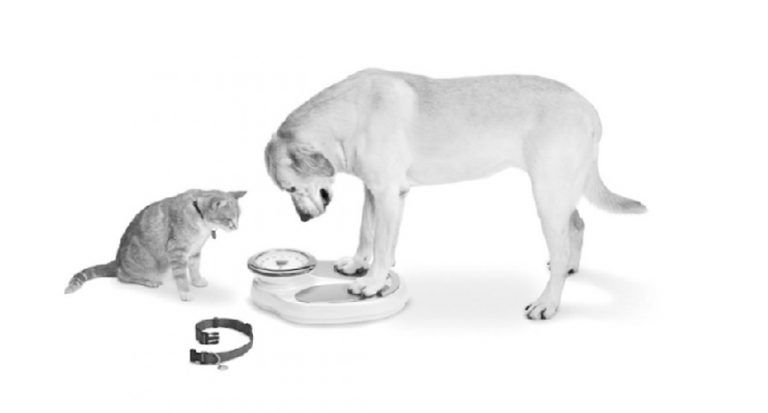Dog and cat microchipping is a simple procedure. A veterinarian simply injects a microchip for pets, about the size of a grain of rice beneath the surface of your pets skin between the shoulder blades. The process is similar to a routine shot, takes only a few seconds, and your pet will not react any more than he would to a vaccination. No anesthetic is required. A microchip is permanent pet ID. The microchip itself has no internal energy source, so it will last the life of your pet. It is read by passing a microchip scanner over the pets shoulder blades. The scanner emits a low radio frequency that provides the power necessary to transmit the microchips unique cat or dog ID code and positively identify the pet. If your pet gets lost and is taken to an animal shelter or veterinarian, they will scan the microchip to read its unique dog or cat ID code. This is the number used by HomeAgain to identify the pet and retrieve your contact information, which is used to contact you and reunite you with your pet.
Fact or Fiction?:
Fiction: Having a microchip implanted will hurt my pet.
Fact: No anesthetic is required for a microchip implant. The procedure is performed at your veterinarian’s office and is simple and similar to administering a vaccine or a routine shot. The process takes only a few seconds, and your pet will not react any more than he would to a vaccination.
Fiction: Pet microchips work like global positioning devices (GPS) and tell me my pet’s location.
Fact: Pet microchips are not tracking devices. They are radio-frequency identification implants that provide permanent ID for your pet. Because they use RFID technology, microchips do not require a power source like a GPS. Since there’s no battery and no moving parts, there’s nothing to keep charged, wear out, or replace. The microchip will last your pet’s lifetime.
Fiction: My pet wears a collar with tags, so he doesn’t need a microchip.
Fact: All pets should wear collar tags imprinted with their name and the phone number of their owner, but only a microchip provides permanent ID that cannot fall off, be removed, or become impossible to read.
Fiction: Microchips are expensive.
Fact: The average cost to have a microchip implanted by a veterinarian is around $45, which is a one–time fee and often includes registration in a pet recovery database. If your pet was adopted from a shelter or purchased from a breeder, your pet may already have a microchip. Consult your pet adoption paperwork, or have your pet scanned for a microchip at your next vet visit to reveal the unique microchip ID number and register it.
Fiction: Only dogs, not cats, need to be microchipped.
Fact: Both cats and dogs need to be microchipped. Cats often do not wear collars, and may not have any other form of ID. A recent study showed that less than 2% of cats without microchips were returned home. However, if a cat is microchipped, the return-to-owner rate is 20 times higher than if the cat was not.
Fiction: I need to microchip my pet more than once.
Fact: A microchip will normally last the lifetime of your pet because it is composed of biocompatible materials that will not degenerate over time. Pet owners can also check to make sure their pet’s microchip is still working by asking a vet to scan it during their pet’s next checkup.





